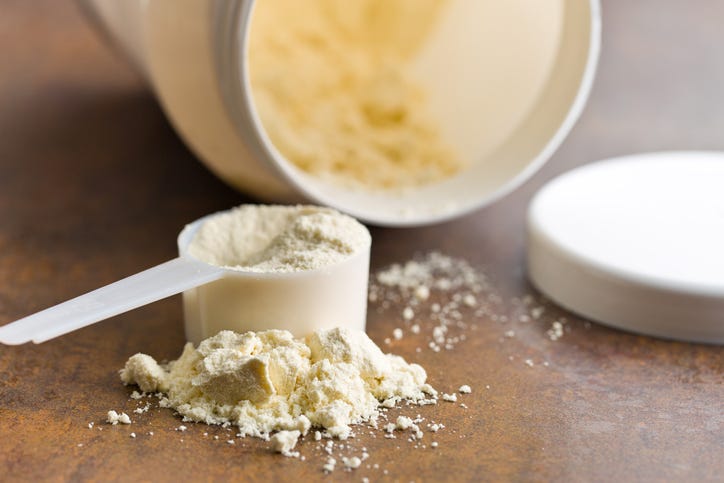The History of Protein Powder
And what the history of protein powder can tell us about why protein powder is so trendy today
Little Miss Muffet
Sat on a tuffet
Eating her curds and whey
Along came a spider
Who sat down beside her
And told her that post-menopausal athletes should eat 2 grams of protein per kilogram of body weight per day and offered her a discount code for the purchase of a protein supplement (from which the spider earns a sweet sweet kickback)
A quick biology lesson:
Proteins are large molecules, comprised of chains of amino acids, that perform many functions within an organism, including the regulation of chemical processes, the protection of cells against foreign particles, and the creation and repair of cells. Protein is an essential component of nutrition — one of the three macronutrients a.k.a. "macros" (the others being carbohydrates and fats) — essential in particular as there are nine amino acids that are not made by our bodies and that must be attained through diet.
Protein powder — typically made from whey, but also from other protein-rich sources like eggs or soy or peas — is one of the most popular supplements on the market, and without a doubt “protein” writ large is one of the biggest trends in wellness technology today.

But it has been popular for a very long time.
And to understand why, it's worth looking at some history…





